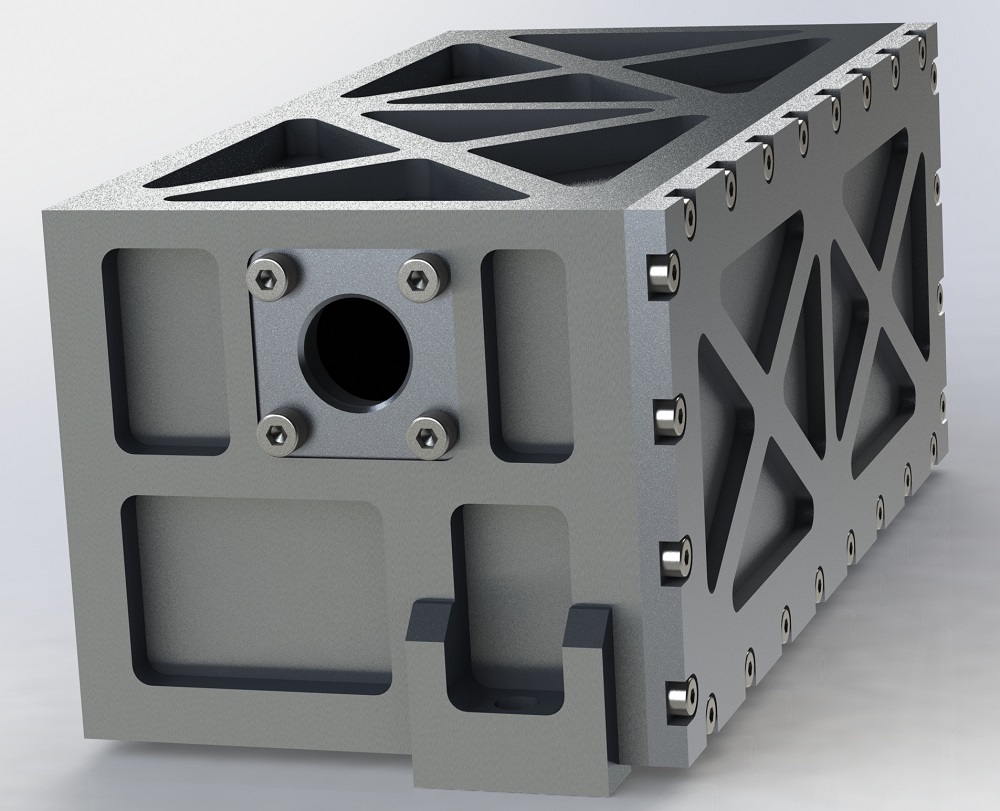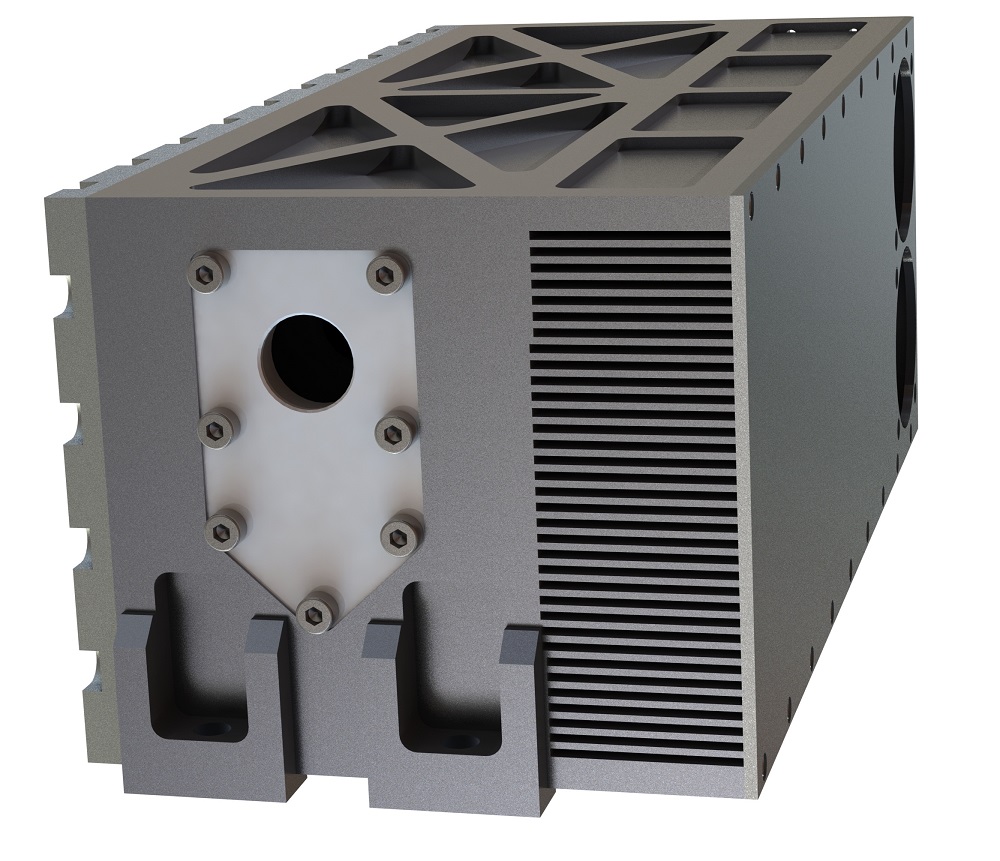Application of MBM02 in Bluetooth Headset
In the entire module structure, the BlueCore2-External Bluetooth chip is the core of the module. The chip has its own MCU, integrated radio frequency and baseband control circuits, and provides a wealth of peripheral interfaces, including UART, USB, PCM and 12 PIO, AIO, SPI and so on. It should be noted that the USB and UART ports must be used separately. The PCM interface is used for the transmission of voice signals. The PIO interface is a general-purpose I/O port. The buttons and indicators can be accessed. The SPI interface is generally used for debugging. Here, the software code in the Flash can be upgraded.
The module has a built-in 16MHz crystal oscillator that provides the chip with a working clock. A 4M Flash is used to store the code. It can also be seen from Fig. 1 that the module integrates the balun and the band-pass filter so that the microstrip antenna can be directly connected when the module is used. In addition, the module also has a built-in voltage regulator circuit for Balun, etc. to provide a working voltage of 1.8V. Therefore, from the perspective of the entire module structure, as long as the expansion of the power supply | voltage regulator control circuit and the corresponding peripheral interface circuit to complete some simple Bluetooth device hardware development.
Function buttons and status indication circuits mainly consider how to use the module's PIO port. The module opens up 8 input/output ports PIO0~PIO7. The usage conditions in the design are as follows: PIO7~PIO4 are used to expand the four function buttons to control the answer. On-hook, volume up, volume down, sleep mode and standby mode switching control.
PIO3~PIO2 are connected with LED indicators for status indication to indicate whether the current status is in matching mode or connected standby mode.
PIO1 and PIO0 are multiplexed I/O ports and can control internal power amplifiers as well as general I/O ports. Since the communication distance of the Bluetooth headset is generally kept at 3 to 5m, no internal power amplifier needs to be turned on. Therefore, here PIO1 is used as a general I/O port to control the opening and closing of the PCM codec, and PIO0 is reserved.
The PCM codec circuit PCM codec is directly connected to the Bluetooth module through a 13 bit bidirectional pulse code modulation interface. The module sends and receives digital voice signals through this interface. The PCM interface is mainly composed of four signals: PCM_SYNC is a synchronous signal of 8KHz, PCM_CLK is a continuous clock signal of up to 256KHz, PCM_IN receives a coded microphone voice signal, and PCM_OUT sends the received digital voice signal from the far-end Bluetooth. Codec, decoder driven speaker | buzzer output. Here, Motorola's MC145483 codec chip is used as the PCM codec. This is a 13-bit linear pulse code modulation chip that can provide high-quality voice communication, and the peripheral circuit is simple. The microphone can be changed by adjusting the corresponding resistance ratio. And the speaker's gain size.
Power Circuit The power circuit consists of a voltage regulator circuit and a voltage monitoring circuit. Since the module has a built-in regulator circuit of 1.8V, only 3V regulator circuit is added here. This article uses 3.6V or 4.2V lithium battery power supply, after the XC6209 regulator into a 3V output to the entire headset work. The voltage monitoring circuit is mainly used for protection. Under normal conditions, the XC61C output is the same as the input and does not affect the operation of the headphones. When the lithium battery voltage is too low, in order to prevent the lithium battery from being over-discharged, the XC61C outputs a low level to the enable CE of the voltage regulator chip, turns off the XC6209, cuts off the power supply to the headphones, and achieves the purpose of protection. In order to reduce the size and cost of the headset, the charging management circuit for the lithium battery is separately implemented in the charger.
The Bluetooth headset is a battery-operated mobile device. The average current is 33.5mA when establishing a voice connection, and the maximum current is 60mA. The average current during standby is 47mA. In order to prolong the use time of the earphone, it is bound to reduce the power loss of the whole circuit to the maximum extent. In addition to the low-power consumption devices, this article also takes the following measures:
1. When the Bluetooth headset is not working, try to sleep mode rather than standby mode. When there is a phone, wake up the headset through the software settings to enter the working state. When in sleep mode, the current can be controlled at the mA level, which greatly extends the battery life.
2. Use PIO1 to control the opening and closing of the codec. In the absence of a voice connection, the codec is always inactive. When a voice connection needs to be established, the codec is activated by software to set PIO1 high, and then the SCO is set up for the call.
3. Change the microphone's offset. The resistor RK is connected to the VAG of the microphone and the codec, and the bias is provided by the VAG instead of the VREG voltage division, so that no current flows through the microphone when the codec is not working.
4. The duty cycle is controlled by software controlling the output levels of the PIO3 and PIO2 ports. In the case of not affecting the LED indication, as long as possible to extend the lamp off time, and the use of rapid pulse control when the light is on, the use of visual effects of the human eye feels that the light is always on during 200ms to reduce the LED loss.
Work process When the headset is powered on, the matching mode indicator will start flashing. Open the Bluetooth phone to search for the device. After finding the device, enter the PIN code. If the match is successful, the connection mode indicator will start blinking. At this time, the headset is in standby mode and can be normal. Already working. When there is an incoming call, a ringing tone synchronized with the mobile phone will also be heard in the earphone. Pressing the answer button will establish the SCO link between the earphone and the mobile phone to transmit the voice. The voice transmission rate is 64 kbit/s. After the end, either the handset or the headset can hang up to disconnect the SCO link and the headset resumes standby mode.
Conclusion Bluetooth headset developed using MBM02, in the case of double-sided wiring and on-board antenna, the required PCB size can be controlled within 28mm × 35mm. This highly integrated Bluetooth module enables engineers and technicians to rapidly develop Bluetooth devices according to different application scenarios, reducing the device size.
Coupletech Co., Ltd. supply diode-pumped Pulsed Solid-state laser and passive Q-Switched Pulse Laser models, in particular, athermal diode-pumped Pulsed solid-state Laser 1064nm without temperature control can work from -40℃ to +60℃ and diode-pumped Pulsed solid-state Laser with air-cooling can work from -40℃ to +60℃ for Laser Distance Measuring, and the power is >100mJ for the repetition of 1-100Hz. Passive Q-Switched pulse laser models consist of Mid-infrared laser MP-3200, Eye-safety Laser MP-1570, Infrared laser MP-1064, Green laser MP-532, UV laser MP-355, Deep UV laser MP-266, and these products cover a wide range of wavelengths: 3200nm, 1570nm, 1064nm, 532nm, 355nm and 266nm, with operating temperature of 10 ~ 35℃, the average power is 0 ~ 200 mW for the repetition of 20kHz.
Coupletech's Pulsed solid-state laser has advantage of compact athermal resonator design, no significant warm up time, no power consuming cooling system, no diode technology for increased efficiency and long life performance, no high energy with low beam divergence and Shock and viabration hardened.

Diode Pumped Pulsed,Laser Diode Module,High Power Laser Diode,Diode Pumped Laser,Eye-safety Laser
Coupletech Co., Ltd. , http://www.coupletech.com